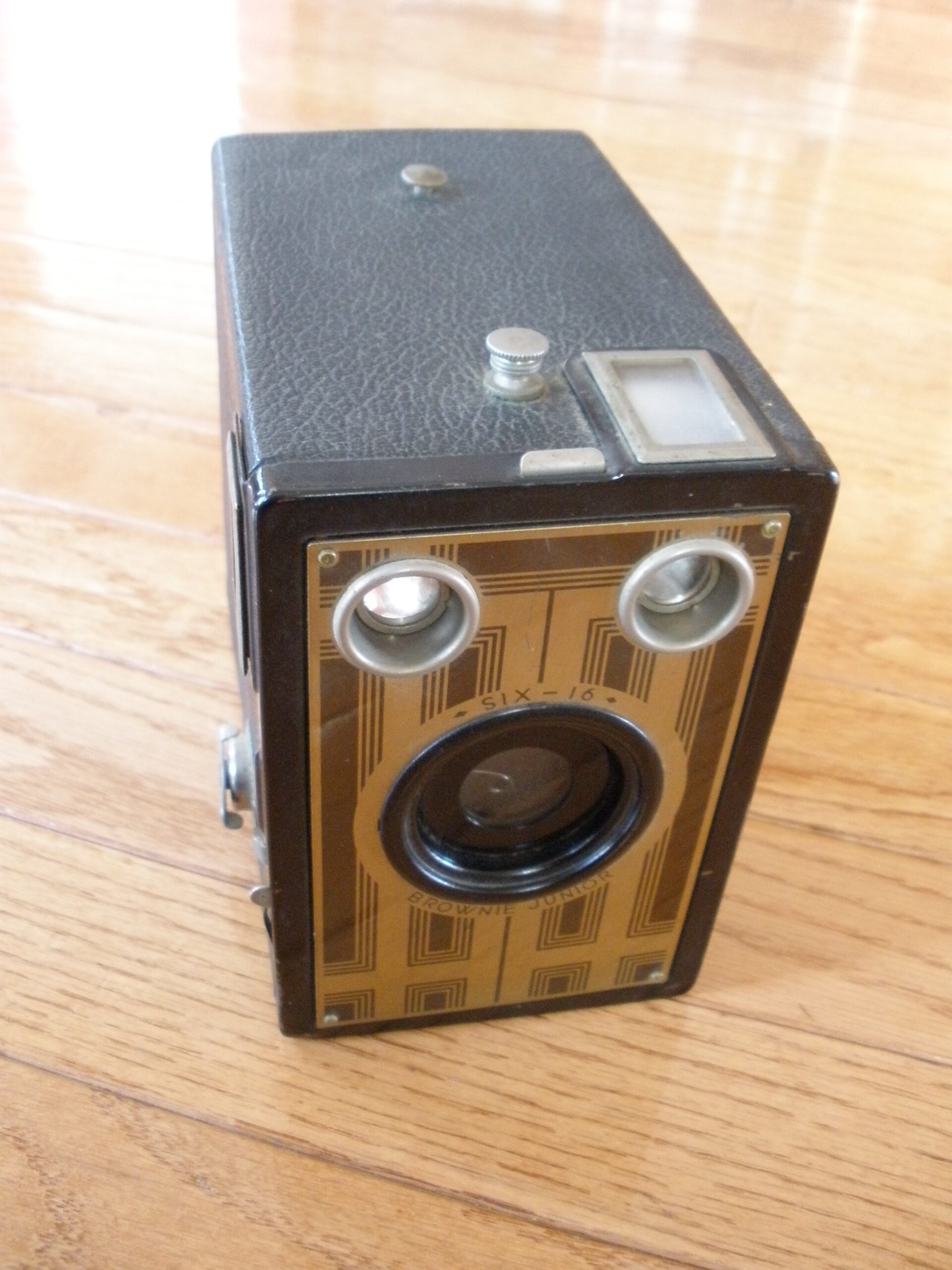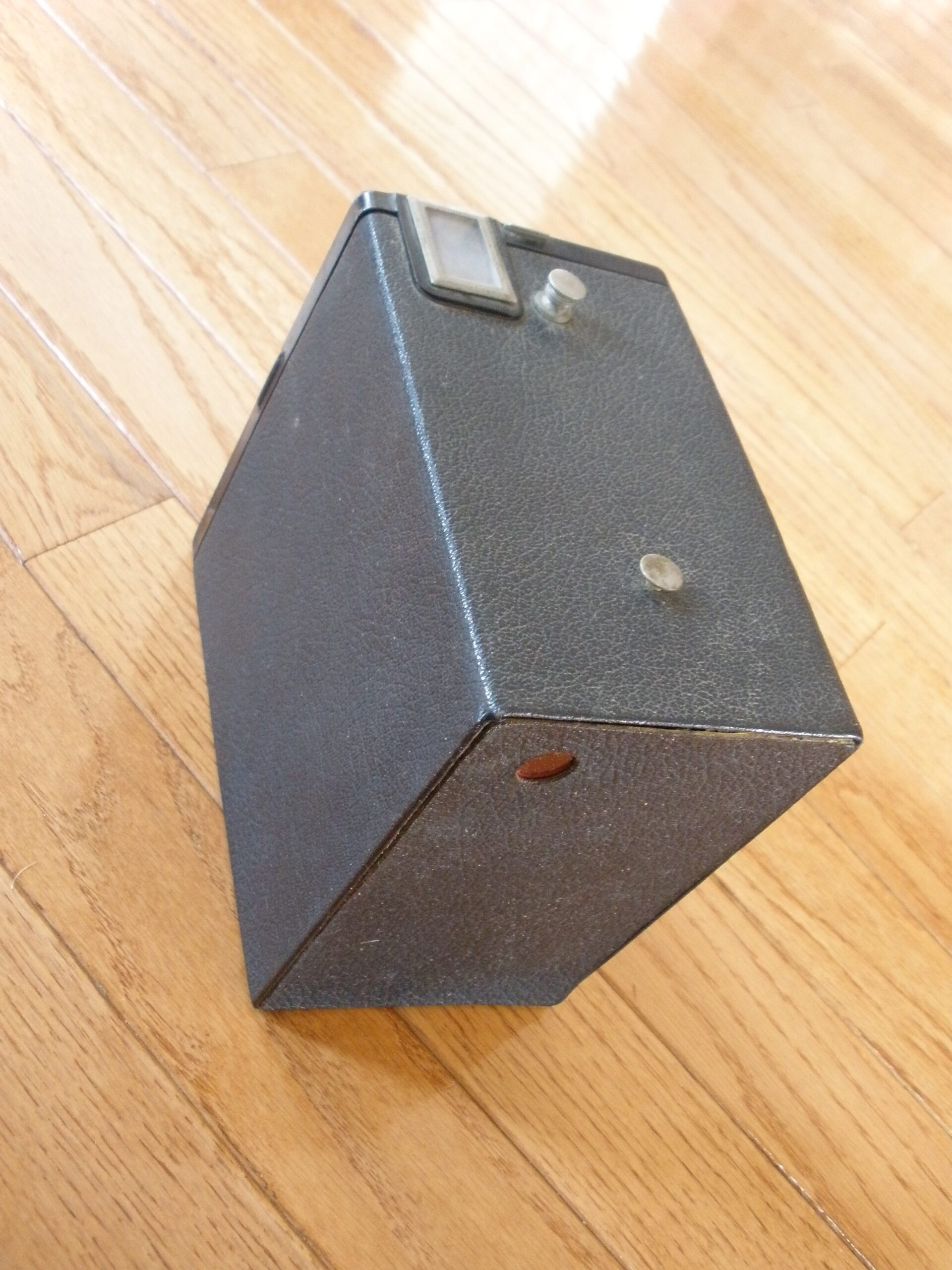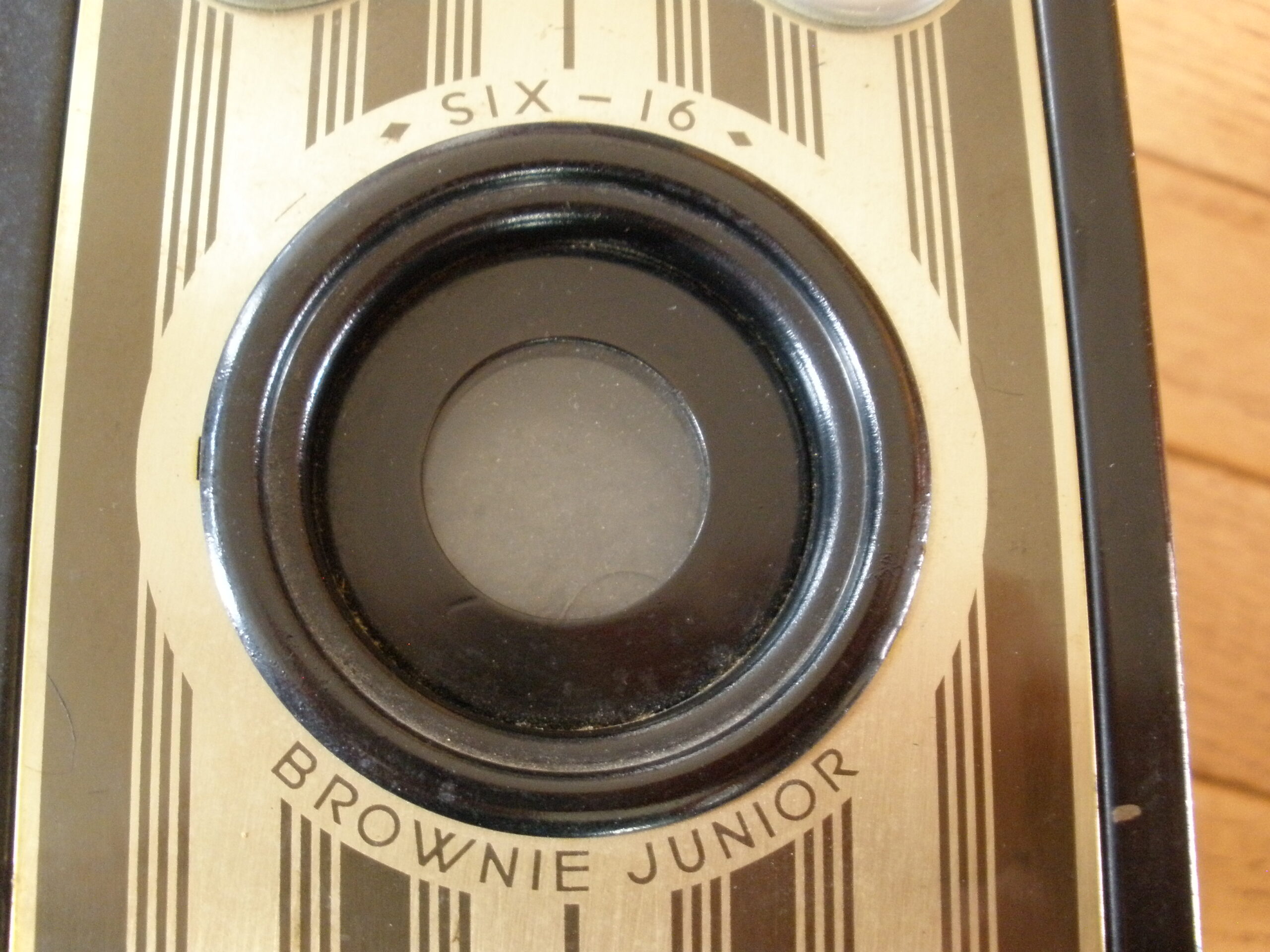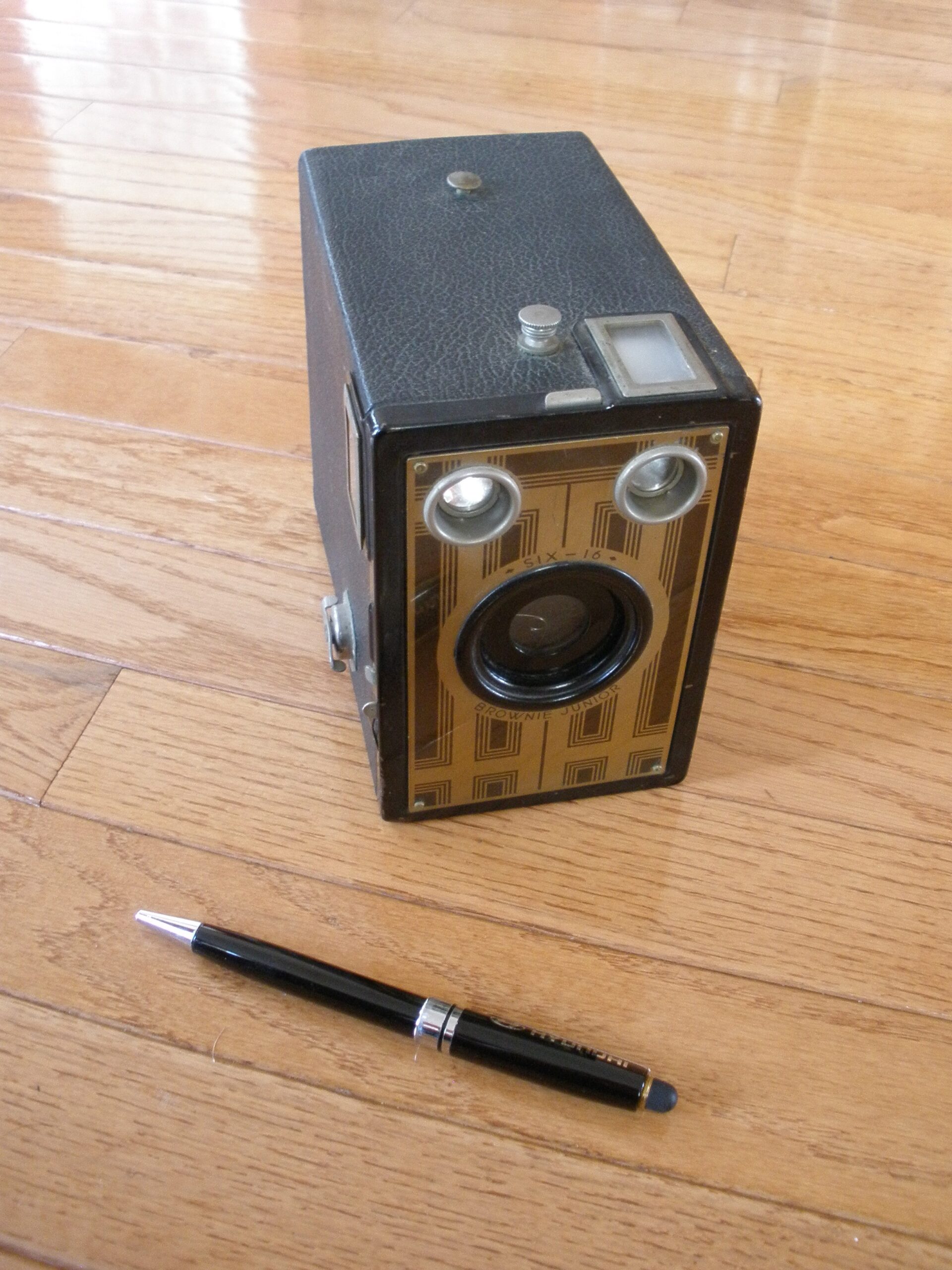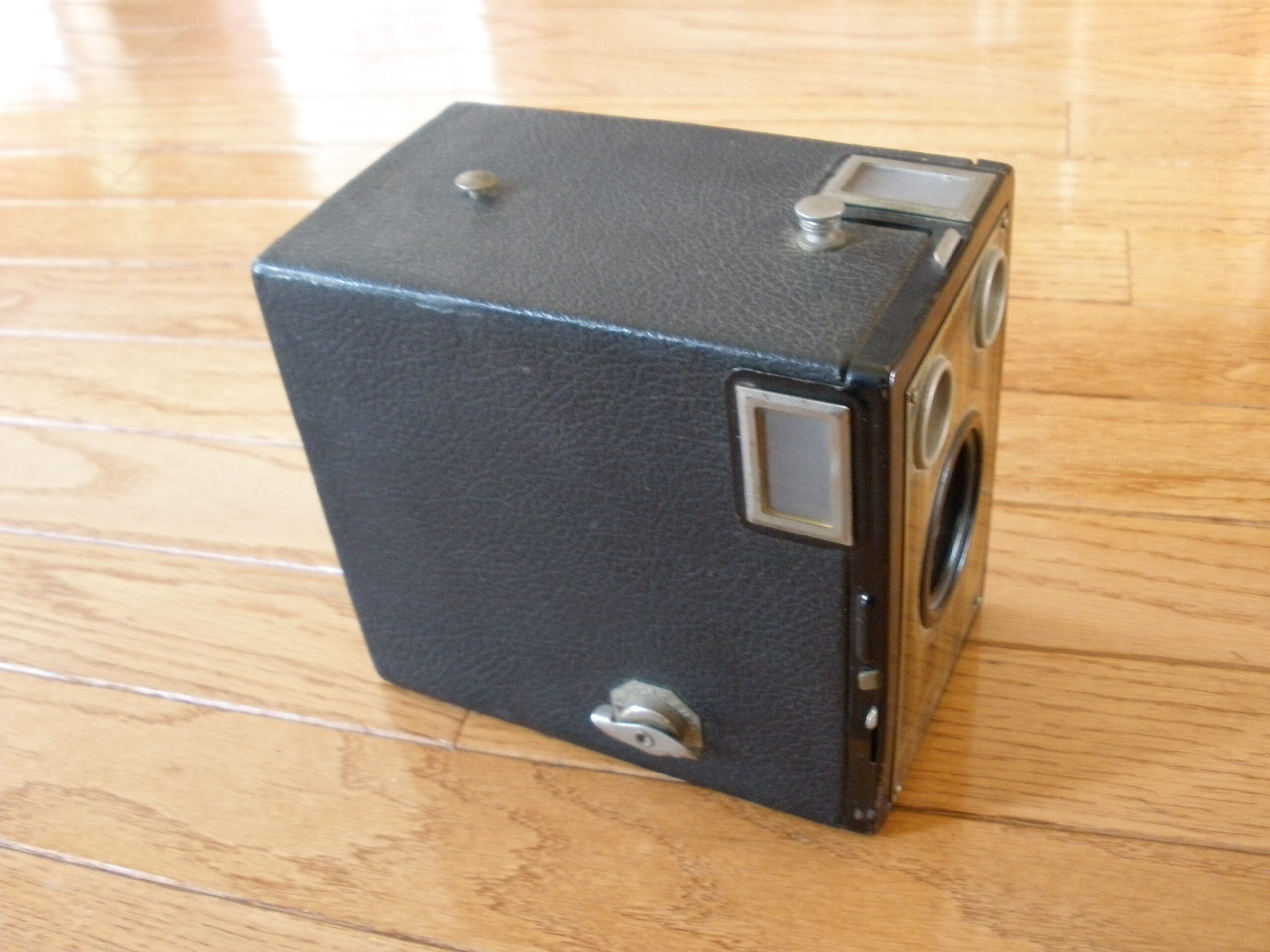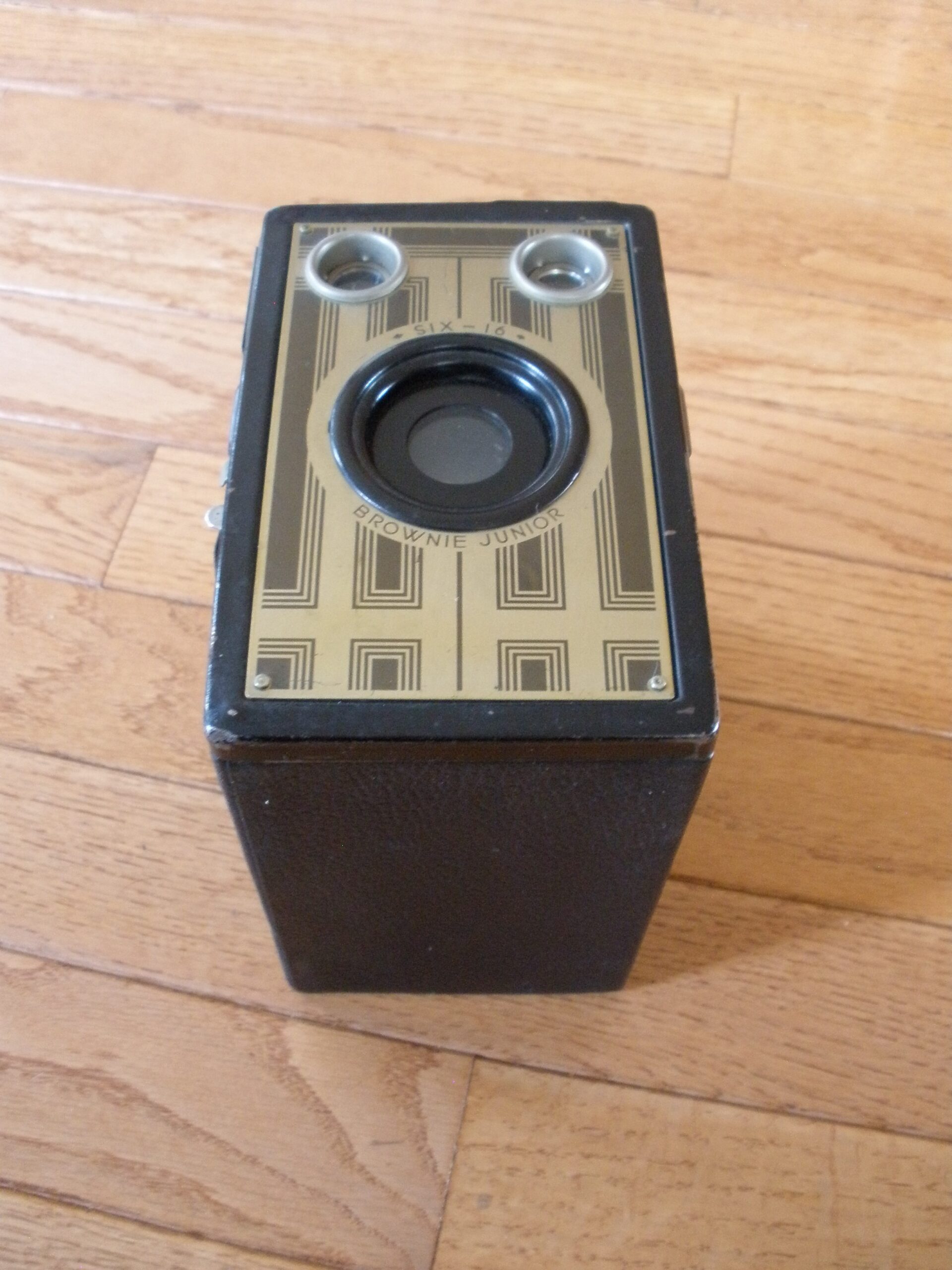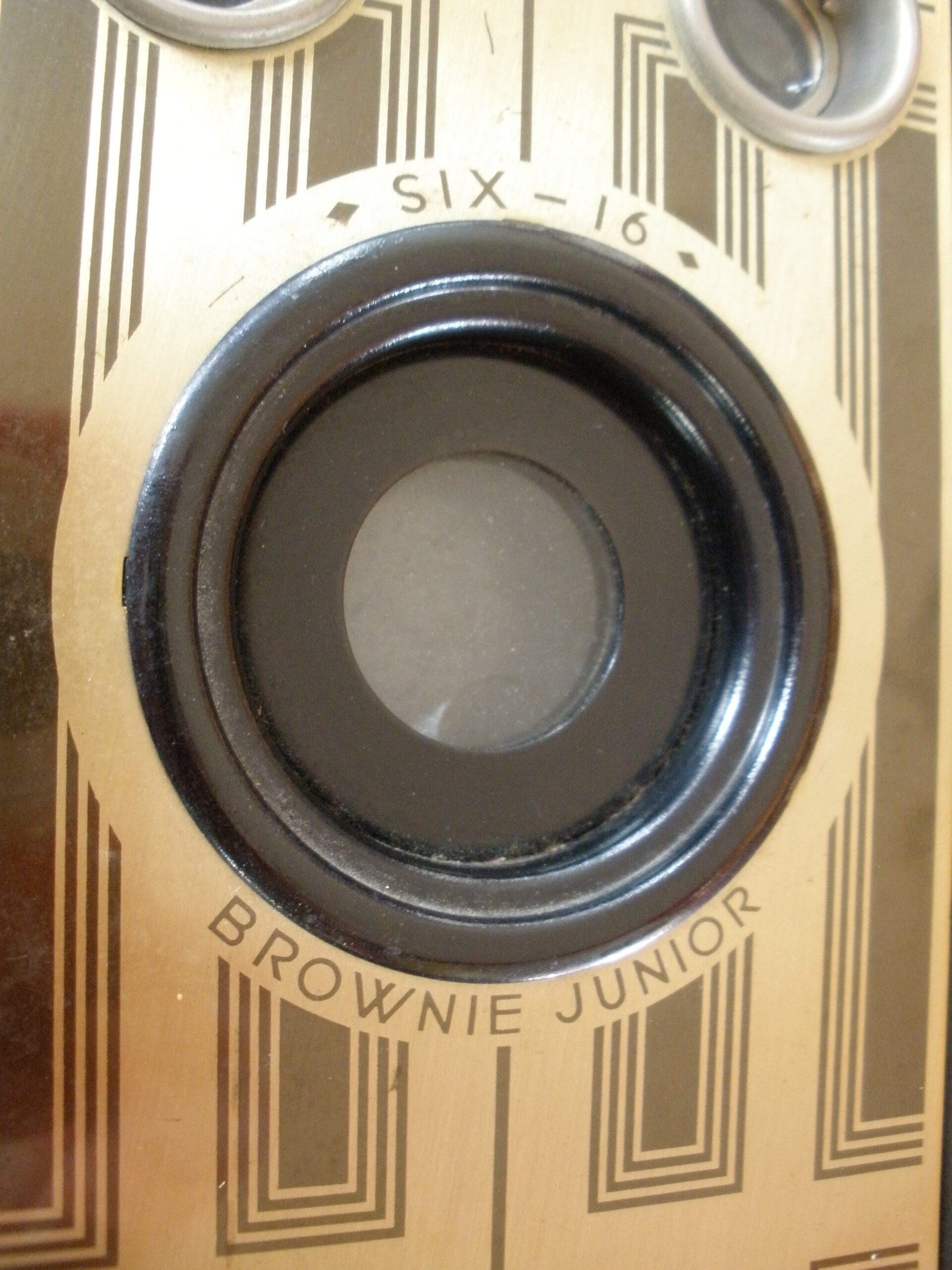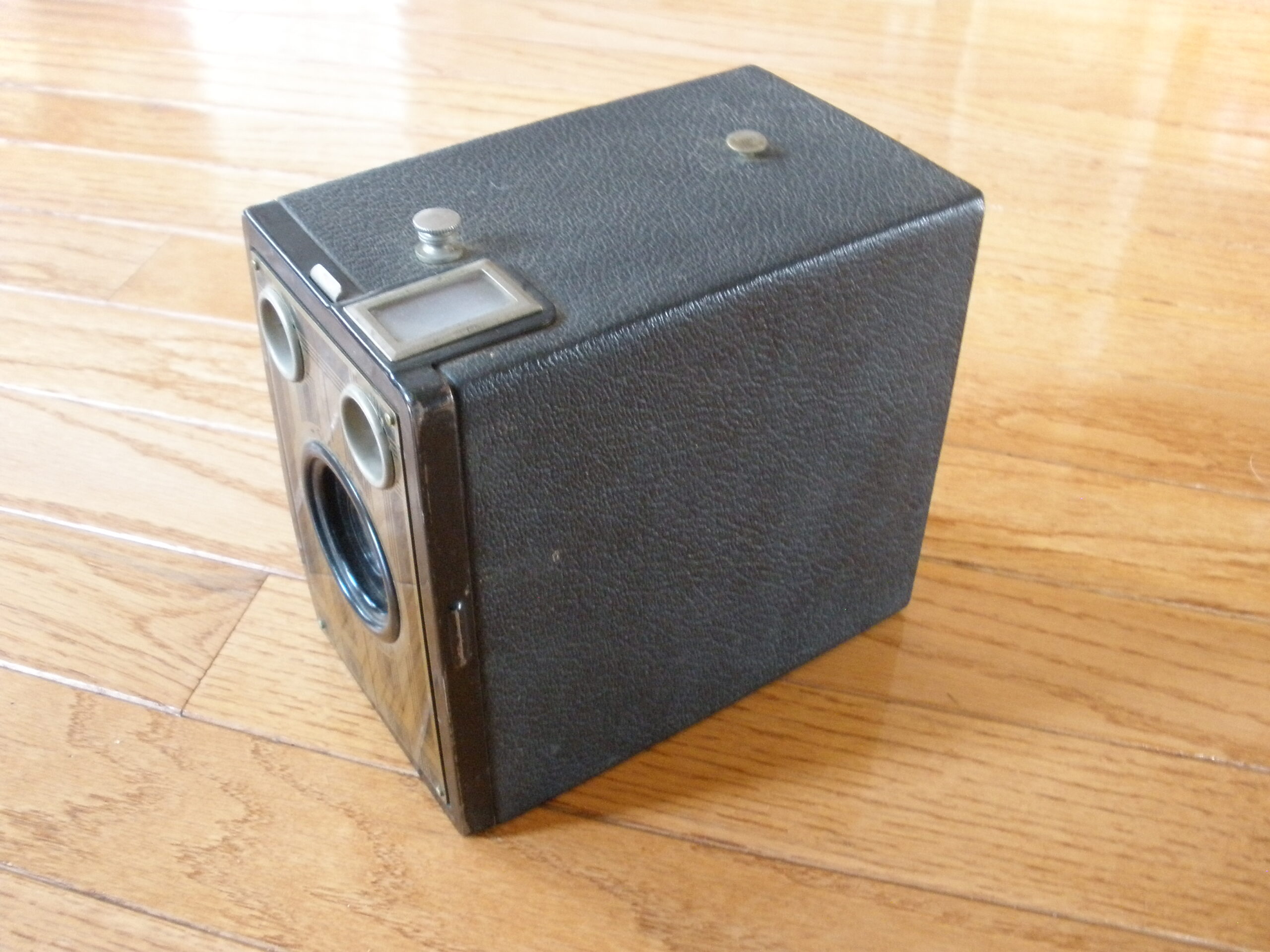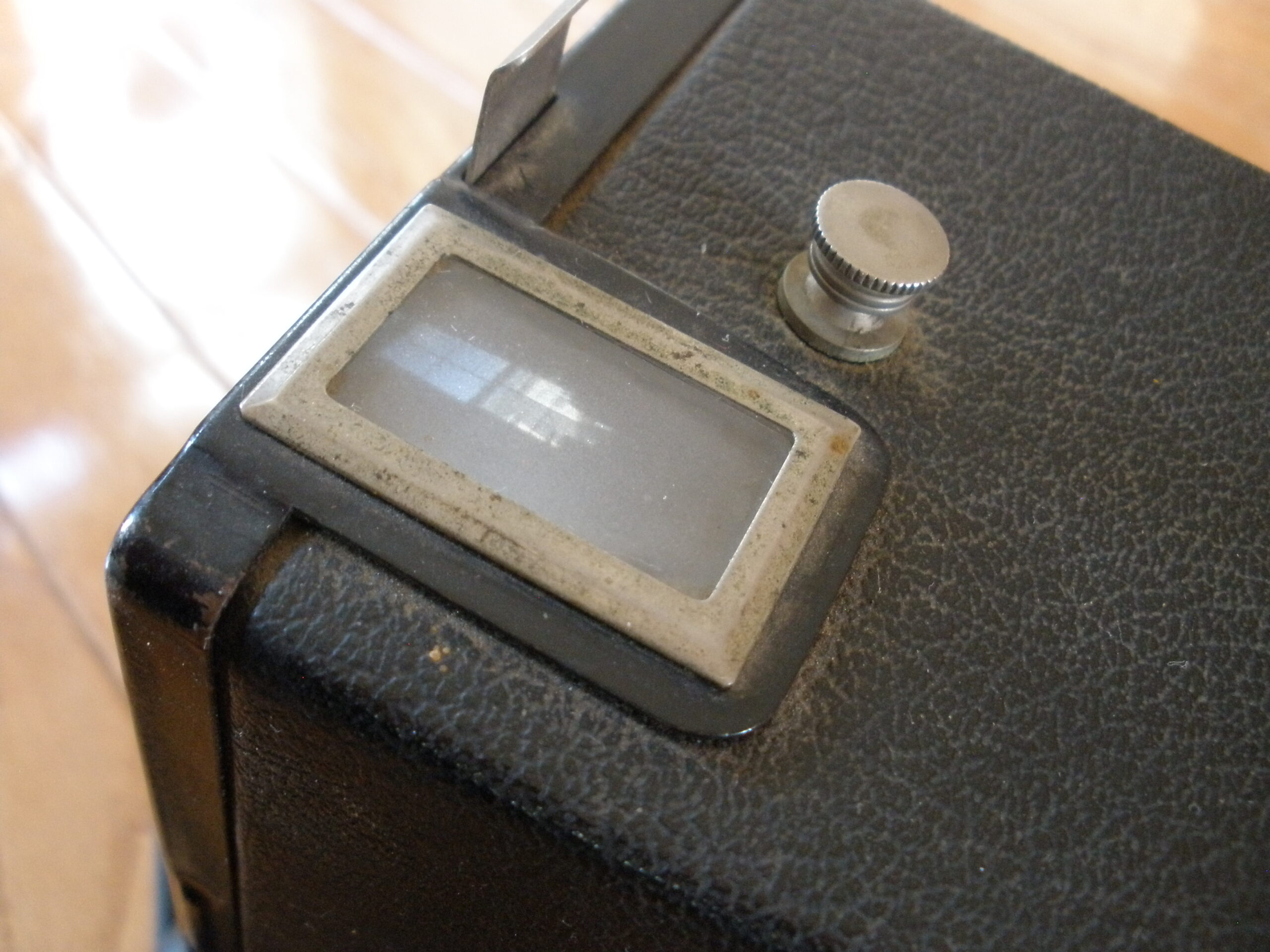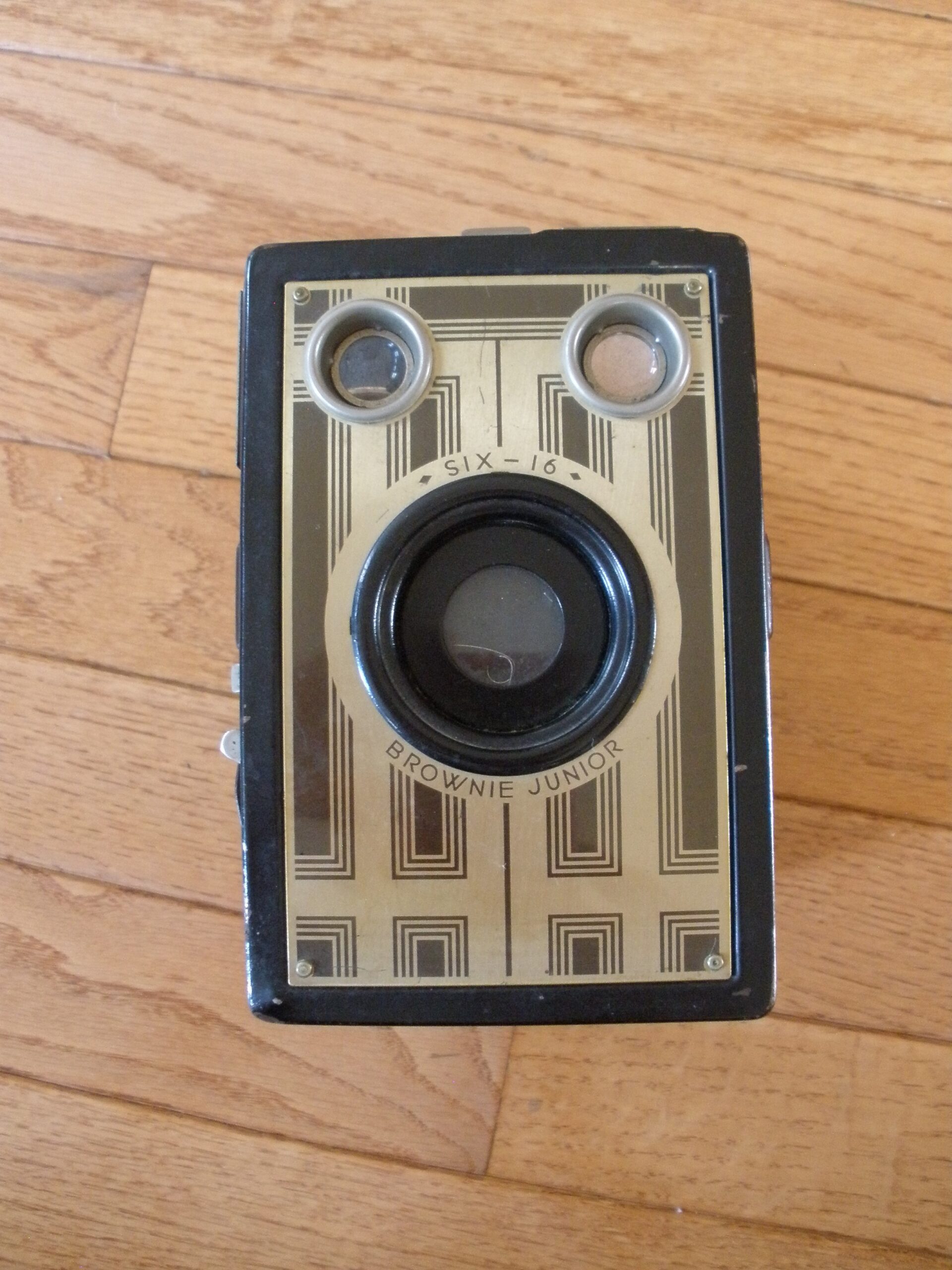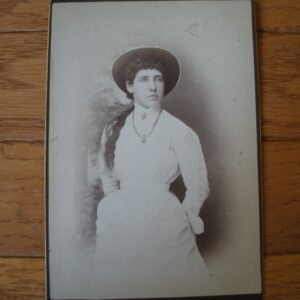For sale is a 1930s KODAK BROWNIE JUNIOR SIX-16 BOX CAMERA. The Brownie Junior Six-16 is a metal box type camera with 2 brilliant view finders and the distinctive vertical line art-deco design on front panel. This camera was introduced in 1934 and manufactured until 1942. The camera features a slide on top of the camera for a smaller f/stop and a slide above the shutter release for time exposures. It has two reflecting finders for taking horizontal or vertical pictures. A top notch collectible vintage camera.
The camera was made for 616 medium format film (hence the name of the camera). The size of the photograph was 2 1/2 inches by 4 1/4 inches. The Six-16 Brownie Junior camera was very popular. This rather large box Brownie produced a large “postcard” size negative perfect for contact printing. Cameras like the Six-16 Brownie Junior are the continuation of large but portable box cameras that helped put the “Postcard Photographers” of early-day resorts, like Coney Island and Atlantic City, out of business.
In 1880, George Eastman leased the third floor of a building on State Street in Rochester N.Y. to manufacture dry plates. In 1888, Eastman registered the trademark Kodak and produced the first model of the Kodak camera. In 1889, the Eastman Company was formed and in 1892 was renamed the Eastman Kodak Company. In 1895, the company made the first pocket Kodak camera which sold for $5. In 1900, the Brownie camera was introduced, creating a new mass market for photography. By 1920, an “Autographic Feature” provided a means for recording data on the margin of the negative at the time of exposure. In 1932, George Eastman committed suicide at age 77. His suicide note read, “To my friends: My work is done. Why wait?” As late as 1976, Kodak commanded 90% of film sales and 85% of camera sales in the U.S. The emergence of digital cameras sparked a death spiral for this iconic American company.

